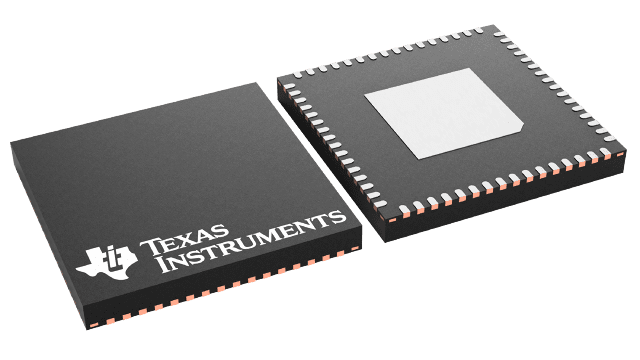Texas Instruments
MSP430F5528IRGCR
MSP430F5528IRGCR
Couldn't load pickup availability
MSP430F5528IRGCR Texas Instruments - Yeehing Electronics
25 MHz MCU with 128KB Flash, 8KB SRAM, 12-bit ADC, comparator, DMA, UART/SPI/I2C, USB, HW multiplier
Pricing (USD)
| Quantity | Unit Price |
| 1 — 99 | 6.845 |
| 100 — 249 | 5.58 |
| 250 — 999 | 4.386 |
| 1,000 + | 3.77 |
The above prices are for reference only.
Specifications
| Manufacturer | Texas Instruments |
| Product Category | 16-bit Microcontrollers - MCU |
| RoHS | Y |
| Mounting Style | SMD/SMT |
| Package / Case | VQFN-64 |
| Series | MSP430F5528 |
| Core | MSP430 |
| Data Bus Width | 16 bit |
| Maximum Clock Frequency | 25 MHz |
| Program Memory Size | 128 kB |
| Data RAM Size | 8 kB |
| Number of I/Os | 47 I/O |
| Operating Supply Voltage | 1.8 V to 3.6 V |
| Minimum Operating Temperature | - 40 C |
| Maximum Operating Temperature | + 85 C |
| Packaging | Reel |
| Program Memory Type | Flash |
| Brand | Texas Instruments |
| Data RAM Type | SRAM |
| Interface Type | I2C, IrDA, SPI, UART |
| Moisture Sensitive | Yes |
| Number of Timers/Counters | 4 Timer |
| Processor Series | Series 5 |
| Product Type | 16-bit Microcontrollers - MCU |
| Factory Pack Quantity | 2000 |
| Subcategory | Microcontrollers - MCU |
| Tradename | MSP430 |
| Watchdog Timers | No Watchdog Timer |
| Part # Aliases | MSP430A132IRGCR |
| Unit Weight | 0.008021 oz |
For more information, please refer to datasheet
Documents
| MSP430F5528IRGCR Datasheet |
More Information
The Texas Instruments MSP430F55xx microcontrollers (MCUs) are part of the MSP430™ system control & communication family of ultra-low-power microcontrollers consists of several devices featuring peripheral sets targeted for a variety of applications. The architecture, combined with extensive low-power modes, is optimized to achieve extended battery life in portable measurement applications. The microcontroller features a powerful 16-bit RISC CPU, 16-bit registers, and constant generators that contribute to maximum code efficiency. The digitally controlled oscillator (DCO) allows the devices to wake up from low-power modes to active mode in 3.5 µs (typical).

